Are you a Quiet Speculation member?
If not, now is a perfect time to join up! Our powerful tools, breaking-news analysis, and exclusive Discord channel will make sure you stay up to date and ahead of the curve.
Rather than try to dazzle you with my accomplishments, dear readers, I would instead like to begin this maiden article with a little bit of logic.
As a trader, I don’t necessarily make the most money in the business, not by a long shot. But as a starving college student, it’s wonderful to know that, if worse comes to worse, I’ll be able to pay for food and a couple of toys. More importantly, however, my time is limited, so my goal over the last 6 months has been to streamline the process of value trading as much as possible, maximize value and to minimize work. I'll start off my time here with this, my personal approach to trading for value. In it, I explain why low value cards are a more lucrative investment than high value ones, simply because their perceived value is less static, and people care less about smaller cards.
Why I’m Here
No bragging, just a prologue.
When I first approached trading, I learned Everything I could about it, with a capital ‘E’.
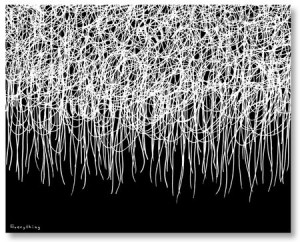
I got a Quiet Speculation account and read every other financial article published on the net since who-knows-when. Following that, I made a definitive list of every card I thought impacted Standard, Extended, Legacy and Vintage at that time and their prices... and then memorized it.
You may have found the flaw in my plan: the overall time commitment was, in a word, obscene. And while I now find myself with what I consider to be strong understanding of the underlying market economics of Magic: the Gathering, I attribute far more to intuitively knowing how cards measure up in the metagame than to any painstakingly devoured laundry list of then-current statistics.
I also tried my hand at speculation, finding reasonable success with the outbreak of Modern, but also found that the amount of effort I needed to put towards actually reselling, listing and calculating profit margins on those speculations to a bit more than the time I had on hand. I have never been the biggest fan of that side of M:tG finance simply because I dislike the variance of gambling, and the unfortunately uncontrollable nature of high-risk, high-reward speculation.
What I eventually lighted on was simple: since my goal was to make money to buy things, not just build a large collection, I had to trade for cards that made not only a good margin consistently, but also had reasonable selling value. These cards are the same ones you’ve heard time and time again: Death Baron, certain Lieges, Mana Reflection, Sanguine Bond - all those perennially undervalued gems that fetch surprising amounts at the dealer tables.
Ratios
The first of my approaches to this was simple - ratios.
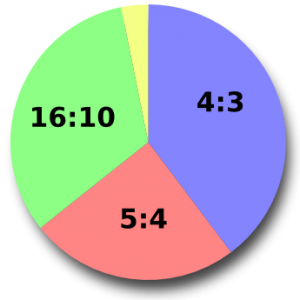
Imagine yourself in a position where you misvalue a Silverblade Paladin at 5 dollars. This is a reasonable number, and not too far off from the truth. Say the last you checked was on May 21st, and it was retailing around 6 dollars.
You learn about this, you shrug, no biggy. What’s a buck in cardboard? It’s not even a real dollar, it’s probably not worth more than 40 cents. I lose that much to couch cushions on a regular basis.
Let’s take an alternative example. How much is Force of Will worth? If you’re any kind of player at all, you should be able to estimate the retail price pretty closely. If you’re a common trader, you probably know the TCGplayer mid too. If you’re an avid trader, you almost certainly know the average buylist, retail sell, eBay sell, TCGplayer and maybe a price compiler like ApathyHouse or BlackLotusProject.
As an avid trader, you were probably close on the Silverblade call - experience with cards in similar positions has left you with the ability to shoot in the right general area without having ever looked at the new set’s prices online.
However, and this is big: If everyone knows what Force of Will is worth, why do you trade for it? Obviously, I’m not advocating avoiding FoW (the card is bonkers, hugely liquid and has a hefty buylist value), but what on earth do you expect to make out of it?
When Jace, The Mind Sculptor retails for 60 and you get him fro 50, you probably pat yourself on the back. I know I do. But what about Silverblade? Worth 6, gotten for 5? Same ratio, and a hell of a lot easier to do. If everyone knows the price of Jace, or the price of Force, where’s the value to be made? Even the most play-focused of people know better than to trade their Force for standard garbage, and most know it’s valuable enough to warrant them taking the mere 30 seconds to check on it.
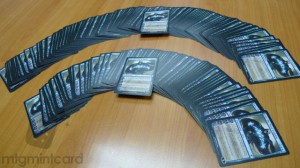
Instead, what I do, and what I advocate, is the equivalent of assured penny stocks. If it’s worth 2 bucks and you get it for 1.50, you just made a 33% profit. That’s huge. Hell, it’s worth 3 and you get it for 2? Bam! 50% and it’s not even hard!
The first complaint here is almost certainly going to be buy value, but why? If you can trade these small value cards for slightly less small value cards, and make up the price gap, you don’t lose anything because of the low buy.
Another Example
Since that the last paragraph was slightly more complicated and indecipherable than the Minotaur’s maze:
You trade a 10 dollar card of your choice for 2 Silverblade Paladin. You make 2 bucks sell, and likely nothing buylist. Those 2 Paladins each turn into a pair of generic 3 dollar cards, which you find relatively easy to turn three of into a generic 10 dollar card.
Now what do you have? In 2 trades, you made a 30% profit on what looks like, at first glance, not only a not particularly lucrative series of trades but trades where your trading partners are unlikely to suspiciously check value. If they’re paranoid and do their research, their first thought probably isn’t to come after you with a pitchfork but to shrug and assign those lost dollars to incidental expenses and never think of them again.
The Brain
Psychology is an important part of Magic, and even more so in trading.
As you may have noticed in the previous example, I pay particular attention to the possible responses of a person. One of the biggest reasons I avoid making value in my big Legacy staple trades is because, psychologically, these are the hardest hits for people to deal with.
If you lose your Force of Will at 10 dollars below retail when the trade has been based on Star City, you feel it.
When you lose your paladin at 1 below retail, you really don’t - even if you lost a multitude of Paladins, it matters less.
When I trade for Legacy staples, I instead strive to achieve the fairest, most even trades I possibly can. Those are the trades that get scrutinized, that get seen and get judged, so being seen as an honest and upstanding trader gives me a level of trust not available to a person who seeks to grind value out of every trade.
In my opinion, this is one of the reasons it’s crucial to remember that trading is nothing more than a vehicle of convenience. Trading allows me to get cards, often more quickly than I would buying them, and obviously for less straight up cash.
If a person is trading for a Standard card, the likelihood is that there are many, many copies floating around their area and the local gaming stores near them. As such, regardless of their assumed cash value, their commonality devalues them in the eyes of the traders.
Perception Matters
Remember Stromkirk Noble? That sucker was once worth 8 bucks, but nobody would ever trade for it at that happily, because everybody and their mother had the better part of a playset sitting around in their binders.
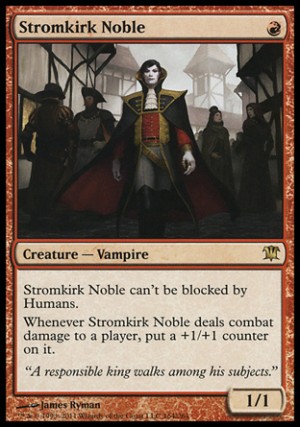
Guess what’s worth 8 dollars? Null Rod. Guess what happens to be valued at 10? Restoration Angel.
Which one do you think commands more value in a trade, despite the Angel being worth more? If you need a hint, remember that Null Rod is a Legacy and Vintage staple, and, even though it's almost completely unplayable right now, it retains some level of liquidity.
People remember it being good, and because it's old and not in Standard, tend to put more stock into its value than other cards. Simultaneously, how many more Angels do you see at the trade tables than Null Rod? If Force (valued 60) has more perceived value than 10 Silverblade Paladins (6 each), doesn’t it make sense that the owner puts more emphasis on not getting ripped when they trade it?
While that may seem unconnected to convenience, trust me - they’re intrinsically tied. The more value an object has that you wish to obtain, the more interest you have in shopping around. The more expensive it is, the more likely you are to scour the internet, the local papers and your friend’s garages to find it.
For example, how much work do you put into finding a nice flower pot? If you’re me, you put the least amount of effort possible - if I’m ever in the position where I need a flower pot, I walk into Lowe’s and get the closest one in the right size.
Compare that to a car. Buying a car, I’d check Craigslist, the local for sale ads, ask around, check on cars with for sales signs on them and generally do anything I could to get the best possible deal
Just like anything else, Magic cards have perceived value, and it's important to realize that when you trade for them.
~
Tune in next week for the second part of this series within which I delve further into the psychology of trading and the value of ratios. I'll even explain what to do if you don't want a binder full of Silverblade Paladins (or worse!), and what the next step is- perhaps there will even be a bulleted list. If you have questions, comments or snide remarks, I eagerly look forward to reading them in the comments section.


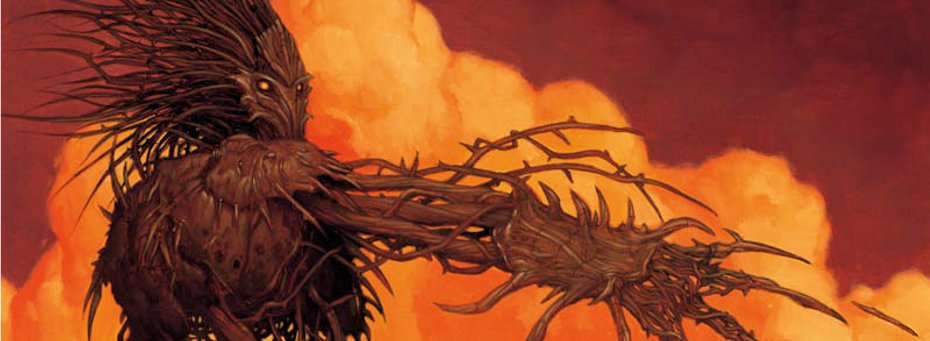


Very promising first article :).
What are your thoughts on suddenly rising cards? The person you traded with will feel like crap discovering their Land Tax has just soared in price and the price is likely to drop down soon so what they perceive their loss to be is even higher than your gain will be in practice.
It depends on who it is. If it's another value trader, I just don't rub it in their face- them's the beats, and there's not any reason to help them. However, if it's a friend, a new player, anything like that, I'll often try to throw them something in addition to help with the value difference. It's rarely come up before in the case of people I know, and who aren't traders, but when it does I'll help. Probably not full value, but if I had traded at land tax for 10, I'd give them a zen fetch in addition.
As for people I don't like, or people who I've seen not just working the margins but truly taking advantage of others, they get no breaks. One such guy traded me stoneforges the night before the PT that they exploded in price- I'd gotten a tip that they were performing VERY well in testing- I traded them back to him. At full price. The day after the PT. It truly depends on who it is. The less they trade, the more value I give them afterwards.
Hi Tucker,
Great first article! I found it engaging and VERY well written. Engaging and with relevant references. Nicely done.
I think you may be touching on it next week, but my number one question in reaction to your article is: what do you do with all these smaller cards? If you can proceed to trade these Silverblade Paladins for 6 then more power to you, but eventually these need to be converted into cash. And selling 10 Silverblade Paladins for $5 each is much more time consuming than selling 1 Force of Will for $50. Do you continue to trade down until you acquire 1$-2$ cards that buylist in that same area?
Aha! Yes! I do indeed discuss this in my next article, but as a sneak preview I recommend selling to dealers. My logic will be more fully explained next week, but suffice to say that if your quantity of high ratio trades can overwhelm the amount of money you would make on force of will trades, it doesn't matter if you lose value trading to a dealer to get what you want. In fact, trading with a dealer gives you the opportunity to get what you want despite it being high end legacy staples for your pile of silverblade paladins. Does that help? And thank you so much for your support, it means a lot.
Thanks for responding to my comment, and you're welcome 🙂
Are you operating under the assumption that you can find someone buying Silverblade Paladins for at least $4-$5? I mean, if a retailer is paying, $2.50 for example, it's not a wise card to move into. My concern is I trade down my legacy staples for 5$ standard cards that dealers will pay $2.50 for. So my Force of Will, which buylists at $30, has now become 10 Silverblade Paladins, which may tradie for higher but buylist at $25.00. Make sense?
Oh, I understand, I've been around the block a few times. In fact, I would rarely if ever advocate trading down the legacy staples you have for standard stuff, simply because the emotional attachment can be hard to get over.
As for whether it's a wise card to move into, you're making the fundamental mistake that you should care what the buy to sell ratio is if it makes you more money than your force. If the lower margin can be made up in quantity, which I assure you it can since so many more players have standard stock to trade than the cards necessary to trade for a force of will evenly, then why does it matter? If in one night your 25 buylist on paladin can turn into a 50 buylist of standard cards, does it really matter that it's not a force of will? Or that you started out with less hypothetical money?
The real question is how much money you can make with each one. I find that despite my best efforts, legacy growth is slow at best, and that the place that consistent money can be made is far more often in standard than not.
This is exactly the kind of articles I've been looking for. It's really hard to find finance articles geared towards those of us who don't have the ability to trade seven days a week or go in on risky potential staples, yet still want to get value out of the secondary market. (how's that for a run-on?)
Anyways, keep it up. Good first article.